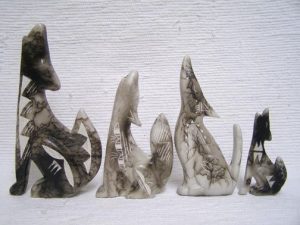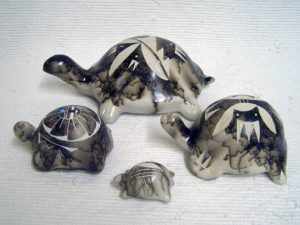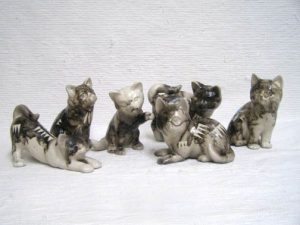When it comes to renewing the relics of the past, Native American art seems to be at the top of the list. There’s such a uniqueness to this sector of art and to the Native Americans’ ability to utilize out-of-the-box thinking to create some timeless masterpieces brings enlightenment to today’s artists. While there were many different types of Native American art, we’re going to focus on horsehair animal figurines.
What Is Horsehair Art?
It is believed by many that Native American culture developed horsehair in pottery accidentally when a woman was taking her hot pots out of the pit fire and a gust of wind blew her hair onto the hot pottery, leaving the charred lines behind. It quickly became a style that was used to honor a favorite horse or celebrate a new foal’s birth. To better understand how horsehair was able to bring such a unique look to Native American art, one must first understand the creation process.
Creating A Horsehair Figurine
In today’s artistic style, horsehair figurines start their creation process in a mold. The mold is in the form of an animal such as a horse, turtle, or frog. Once the clay is poured into the mold and dries for a time, it is removed from the mold, finishes drying, is cleaned up by the potter and then placed into the kiln. This allows the clay to fire to for a short period of time between 1300 and 1800 degrees Fahrenheit.
 The hot piece is removed from the kiln with tongs. The artist will proceed to drape tail and mane hair on the figurine in a desired fashion. Once satisfied with the placement of the horsehair, the artist will then return the piece to the kiln for a smoking stage. During the smoking stage, dark lines form where the horsehair was placed. The smoky looking grey areas are a result of the fire burning the hair.
The hot piece is removed from the kiln with tongs. The artist will proceed to drape tail and mane hair on the figurine in a desired fashion. Once satisfied with the placement of the horsehair, the artist will then return the piece to the kiln for a smoking stage. During the smoking stage, dark lines form where the horsehair was placed. The smoky looking grey areas are a result of the fire burning the hair.
The figurine is then removed from the kiln to cool. Depending on the preference of the artist, they may decide to do some further painting and/or etching of the piece. This further decoration usually includes animal art like wolves and buffalo as well as traditional and abstract Native American symbols. Due to the unique process of creating horsehair animal figurines, each one turns out a little different than the next.
Choosing Mane vs. Tail Hairs
As you learned above, the process of creating horsehair animal figurines can involve the use of both horse mane and tail hairs. Each kind produces a unique look on the figurine. Hairs from a horse’s mane will show up as finer, subtle lines. Hairs from a horse’s tail produce stronger, thicker lines. This is simply a result of the different coarseness of the hairs.
Due to the production process, each piece has its own unique look that is impossible to replicate. Most artists will choose to use between 10 and 12 horse hairs. This strikes a good balance between having enough hairs to create a striking visual impact on the animal figurine without ruining the overall contrast between the hair and the background of the piece.
You can find a variety of beautiful horse hair ceramic animal figurines at Kachina House. Choose from cats, coyotes, turtles, reptiles, horses and more, all handcrafted and unique.


